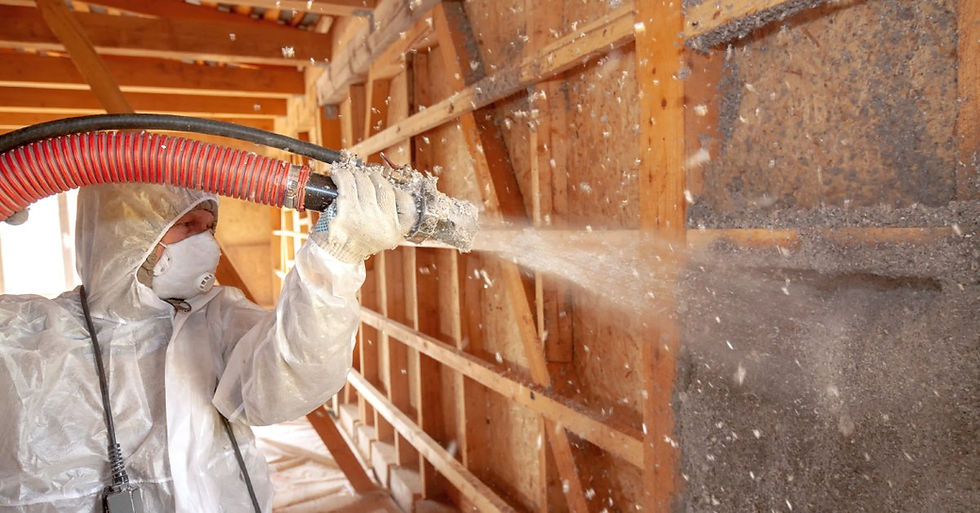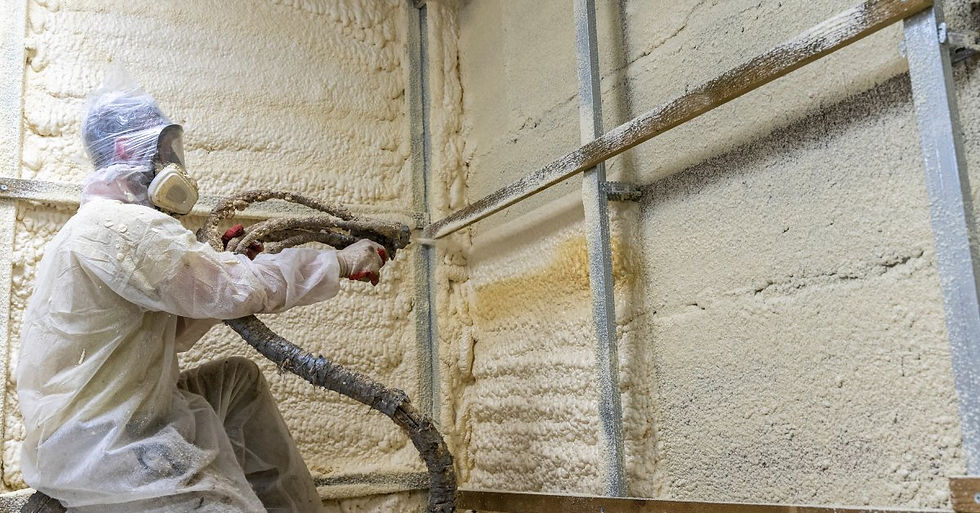Heated Spray Hose Lifespan: How Proper Care Saves Cost
- James King
- Aug 5
- 5 min read

Homeowners and contractors working with spray foam insulation know that equipment costs can make or break a project. Among all the essential tools in your arsenal, heated spray hoses represent one of the most significant investments, and unfortunately, one of the most frequently replaced components.
When these hoses fail prematurely due to poor maintenance, the financial impact extends beyond replacement costs. Project delays, lost productivity, and emergency equipment purchases can quickly escalate expenses. Here, we’ll explore the average heated spray hose lifespan, highlighting how proper care saves on cost. By the end, you’ll have actionable maintenance strategies that will help you maximize your investment while minimizing downtime.
Understanding Heated Spray Hose Construction
Before diving into maintenance practices, it’s important to understand what makes heated spray hoses vulnerable to wear and failure. These specialized hoses must simultaneously handle high-pressure chemical flow, maintain precise temperatures, and withstand the physical demands of jobsite use.
Most heated spray hoses feature multiple layers: an inner chemical-resistant core, heating elements, insulation, and a protective outer jacket. Each component plays a critical role in performance, and failure in any layer can compromise the entire hose.
Factors That Determine Hose Lifespan
Material Quality and Construction Standards
Not all heated spray hoses are equal. The quality of materials used in construction directly impacts durability and service life. Higher-grade hoses typically feature superior chemical-resistant linings, more robust heating elements, and better insulation materials.
When evaluating hose options, consider the manufacturer’s reputation, warranty terms, and compliance with industry standards. While premium hoses command higher upfront costs, they often deliver better long-term value through extended service life and improved reliability.
Operating Pressure and Temperature Management
Heated spray hoses are designed to operate within specific pressure and temperature ranges. Consistently operating outside these parameters accelerates wear and increases the risk of failure.
Most spray foam applications require operating pressures between 800-3,000 PSI and temperatures ranging from 120-180°F. Exceeding these limits, even briefly, can damage internal components and significantly reduce hose life.
Environmental Conditions and Protection
Jobsite conditions play a major role in hose longevity. Exposure to UV radiation, extreme temperatures, abrasive surfaces, and chemical spills can all contribute to premature wear.
Cold weather presents particular challenges for heated spray hoses. Rapid temperature changes can stress materials and connections, while frozen moisture can damage heating elements. Conversely, excessive heat exposure can degrade rubber compounds and insulation materials.
Chemical Compatibility and Exposure
Spray foam chemicals are inherently aggressive and can attack hose materials over time. Even hoses designed for spray foam applications will eventually succumb to chemical degradation, but proper practices can slow this process.
Different spray foam formulations may have varying effects on hose materials. Switching between different chemical systems without proper cleaning can accelerate degradation and cause compatibility issues.

Essential Maintenance Practices
Regular Inspection and Cleaning Protocols
Weekly visual inspections should check for obvious damage. In contrast, more detailed monthly inspections examine connections, heating elements, and internal condition. Look for signs of chemical buildup, cracks in the outer jacket, damaged fittings, or inconsistent heating performance. Immediately address any issues rather than waiting for complete failure.
Proper cleaning procedures are equally important. Flush hoses with appropriate solvents after each use, following manufacturer recommendations for cleaning agents and procedures. Never use harsh chemicals or excessive pressure during cleaning, as these can damage internal components.
Storage Techniques That Preserve Hose Integrity
Proper storage prevents unnecessary stress, protects against environmental damage, and maintains heating element integrity. Store hoses in clean, dry environments away from direct sunlight and extreme temperatures. Use hose reels or hangers that support the hose’s weight without creating sharp bends or kinks.
Before storage, ensure hoses are completely clean and dry. Trapped moisture can freeze and damage heating elements, while residual chemicals can continue degrading materials during storage periods.
Pressure and Temperature Monitoring
Consistent monitoring of operating parameters limits damage from excessive pressure or temperature conditions. Establish clear operating procedures that define acceptable pressure and temperature ranges for different applications. Create protocols for shutting down equipment when parameters exceed safe limits.
Consider investing in data logging equipment that can track operating conditions over time. This information helps identify trends that might indicate developing problems and provides valuable data for optimizing equipment settings.
Avoiding Physical Damage
Physical abuse represents one of the leading causes of premature hose failure. Overbending, kinking, dragging across rough surfaces, and impact damage can all compromise hose integrity.
Invest in quality hose management equipment, such as reels and guides, that help maintain proper hose positioning during operation. While these accessories require upfront investment, they pay for themselves through extended hose life and reduced replacement costs.

Troubleshooting Common Problems
Identifying and Addressing Leaks
Leaks are among the most common heated spray hose problems and can range from minor seepage to major failures. Early detection and prompt repair can often prevent minor leaks from becoming major problems.
External leaks are usually visible and easy to identify, but internal leaks between chemical passages can be more challenging to diagnose. Watch for changes in spray pattern, pressure drops, or chemical mixing issues that might indicate internal damage.
Clearing Blockages Safely
Chemical buildup and contamination can create blockages that restrict flow and increase operating pressures. Left untreated, blockages can cause pressure spikes that damage hose components.
Use appropriate solvents and cleaning procedures recommended by your hose manufacturer. Never use excessive pressure or inappropriate cleaning agents, as these can damage internal components or heating elements.
Recognizing Signs of Wear and Deterioration
Learning to recognize early signs of hose deterioration prevents unexpected failures and costly downtime. Common warning signs include changes in flexibility, surface cracking, discoloration, and heating irregularities.
Pay attention to performance changes such as pressure drops, temperature variations, or changes in spray characteristics. These symptoms often indicate internal damage that may not be visible from external inspection.
When To Replace Your Heated Spray Hose
Even with excellent maintenance practices, heated spray hoses eventually reach the end of their service life. Consider replacement when repair costs approach 50 percent of replacement cost, when safety concerns arise, or when performance no longer meets job requirements. Don’t wait for complete failure, as this typically occurs at the worst possible time.
The Value of a Reliable Equipment Supplier
Your equipment supplier plays a crucial role in maximizing heated spray hose lifespan. Quality suppliers provide not only superior products but also technical support, maintenance guidance, and rapid response for emergency needs.
Look for suppliers who understand spray foam applications and can provide expert guidance on hose selection, maintenance practices, and troubleshooting. Suppliers who stock common replacement parts and offer quick delivery can minimize costly downtime.
Maximizing Your Equipment Investment
To maximize your heated spray hose lifespan, knowing how proper care saves cost is the first step. Remember that prevention costs far less than replacement. A few minutes of daily maintenance and attention to operating practices can save thousands of dollars in equipment costs while keeping your projects on schedule and under budget.
Are you ready to get started on your insulation project? Heated hoses from HandCrafted Hose Company offer excellent value and reliability, giving you a firm foundation for your work. See for yourself how our products improve construction.





